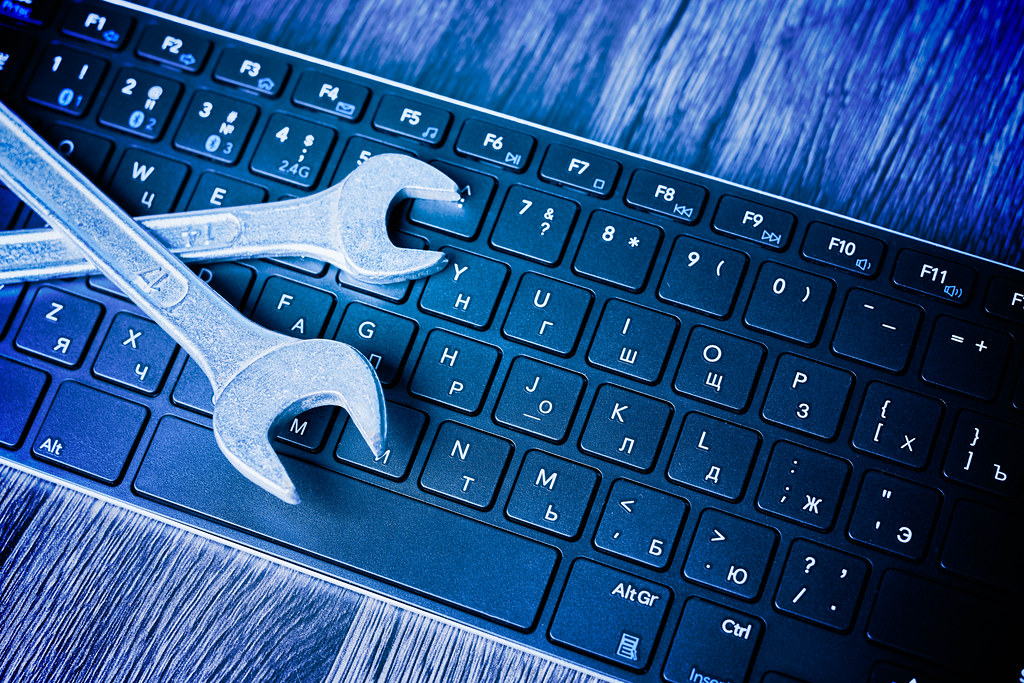In today’s fast-paced world, our reliance on personal computers for work, study, and leisure is undeniable. But what happens when your trusty machine starts acting up? Before you consider a costly trip to the repair shop, know that many common PC issues can be fixed right at home with a bit of knowledge and elbow grease. This guide offers simple solutions for the most frequent PC troubles, empowering you to get your computer back in tip-top shape without breaking the bank.
Getting to Know Your PC
Before diving into repairs, it’s crucial to understand the basics of your PC. Familiarize yourself with its components: the motherboard, Central Processing Unit (CPU), Random Access Memory (RAM), storage (Hard Disk Drive or Solid State Drive), Power Supply Unit (PSU), and for gamers or graphic designers, the Graphics Processing Unit (GPU). Knowing these will help you diagnose and fix issues more effectively.
Essential Tools for DIY PC Repair
A basic toolkit can greatly aid in home pc repair in bakersfield. Here’s what you’ll need:
- Screwdriver Set: For opening the case and tightening or replacing components.
- Anti-Static Wrist Strap: Prevents static damage to sensitive components.
- Compressed Air: Dust accumulation can cause overheating; this helps keep your PC clean.
- Thermal Paste: For CPU or GPU maintenance, ensuring efficient heat dissipation.
Common PC Problems and How to Fix Them
The PC Won’t Start
This can be alarming, but often the solution is simpler than you think. Check your power connections; ensure the cable is firmly plugged into both your PC and the outlet. Try a different power cable or outlet to rule out those issues. If there’s still no response, the problem might lie with your PSU, which can be tested with a multimeter or by substitution with a known working unit.
Overheating and Shutdowns
If your PC is randomly shutting down or feels hot to the touch, it could be overheating. Open up the case (with the PC powered off) and use compressed air to blow out any dust, especially from the fans and heat sinks. Ensure all fans are spinning correctly; replace any that aren’t. If the CPU is the culprit, removing the heat sink, cleaning off the old thermal paste, and applying a new layer can significantly improve temperature management.
Slow Operation
A sluggish PC can often be rejuvenated without hardware interventions. Start by decluttering your hard drive: uninstall programs you no longer use, clear out temporary files, and run a disk cleanup. Consider upgrading to an SSD if you’re still using an HDD. Also, ensure your operating system and all drivers are up to date for optimal performance.
Connectivity Issues
If you’re experiencing trouble with internet or peripheral devices, start by checking your physical connections. Unplug and replug ethernet cables or USB devices to ensure a firm connection. For wireless issues, restart your router or modem. Updating device drivers can also resolve connectivity problems, especially with newer devices.
Upgrading Your PC
Sometimes, a simple upgrade can breathe new life into an old machine. Adding more RAM or switching to an SSD for storage can dramatically improve performance. These upgrades are relatively straightforward: for RAM, slots are keyed to prevent incorrect installation, so it’s just a matter of opening the clips, inserting the new RAM, and closing the clips. For an SSD, you’ll typically need to connect it to your motherboard with a SATA cable and attach power from the PSU.
Preventative Maintenance
The best way to fix a PC problem is to prevent it from happening in the first place. Keep your computer clean and dust-free to avoid overheating. Regularly update your operating system and software to patch security vulnerabilities and improve performance. Monitor your storage space and keep it decluttered. Finally, use antivirus software to protect against malware that can slow down or harm your PC.
When to Call a Professional
While many PC issues are fixable at home, some problems require specialized knowledge and tools. If you’re facing complex motherboard issues, suspect a severe malware infection, or are dealing with data loss, it’s time to consult a professional. Attempting to fix these issues yourself could lead to further damage or data loss.
Conclusion
With the right tools and a bit of patience, many PC issues can be resolved at home, saving you both time and money. From power problems to performance hiccups, simple solutions often suffice. Remember, regular maintenance can prevent many issues from arising. However, know your limits; for complex issues, don’t hesitate to seek professional help. Armed with this guide, you’re well-equipped to tackle basic PC repairs and maintenance, ensuring your machine serves you well for years to come.

